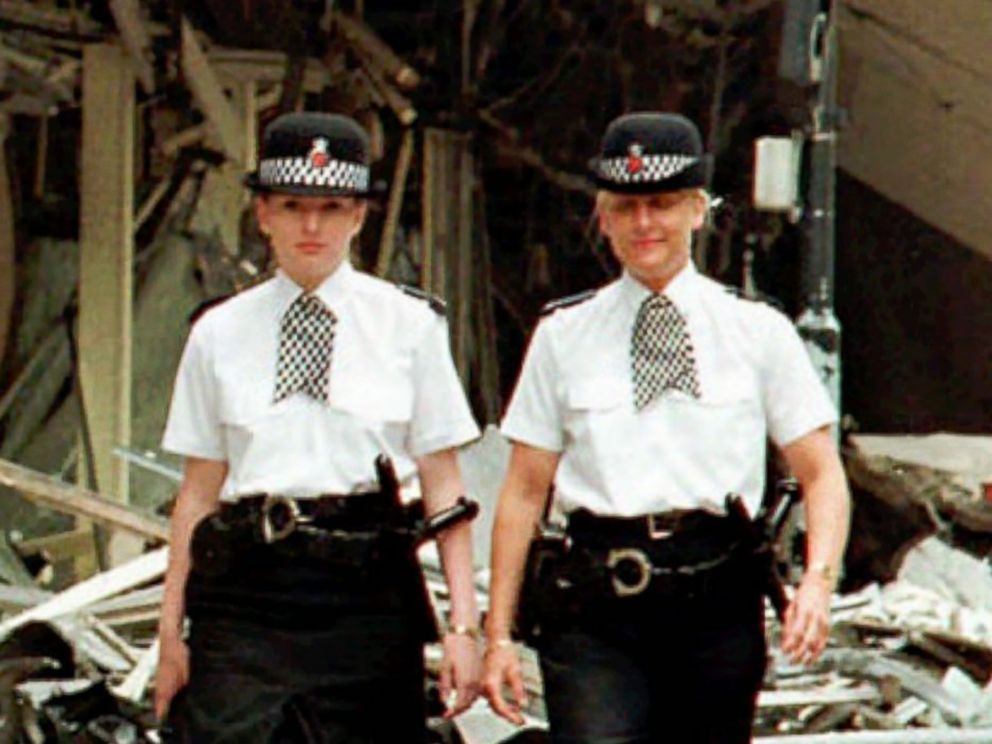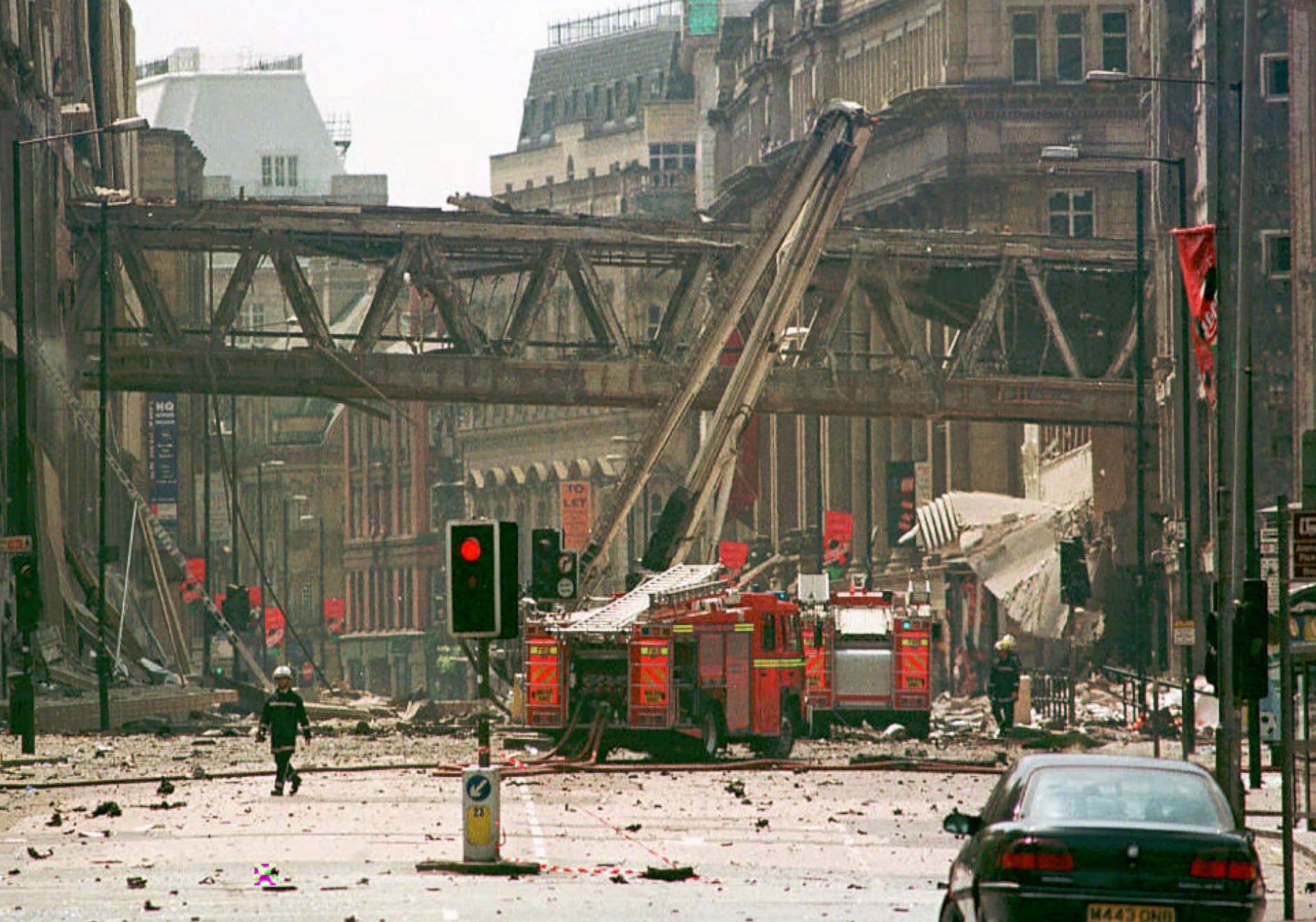A look back at the 1996 IRA bombing in Manchester
A 1996 IRA bombing wrecked a large part of the city center and injured over 200.
— -- The suicide bombing that struck an Ariana Grande concert in Manchester, England, on Monday night, killing at least 22 people and injuring dozens of others, is the deadliest terrorist attack the city has experienced.
It is not the first, however; Manchester, in northern England, has a long history of living with terrorism, having faced a string of bombings from the 1970s through the mid-1990s, carried out not by Islamist attackers but by Irish nationalists.
In 1996 much of the city’s center was wrecked by a massive bomb planted by the Irish separatist group the Irish Republican Army, which was waging a campaign of attacks across the U.K. The 3,300-pound device was the largest detonated by the IRA in the U.K. and the biggest exploded bomb in the country since World War II.

On a June Saturday in 1996, two IRA members parked a large truck containing explosives on a street in the city’s main shopping district, not far from the concert arena that was attacked on Monday. Unlike jihadi terrorist groups such as ISIS and al-Qaeda, the IRA frequently provided warnings before it struck. About an hour before the 1996 Manchester bombing, “a security guard at ITV’s Granada studios ... received a phone call from a man with a ‘very calm’ Irish voice,” informing him of the coming blast, the BBC reported.
After the call, police rushed to evacuate nearly 80,000 people from the area. They found the bomb and tried to defuse it by using a robot, but it exploded before they succeeded.

The explosion tore apart the street and caused major damage for blocks; windows nearly half a mile away were blown out. Because of the evacuation, no one was killed, but about 220 people were injured, mostly by flying glass. The blast was estimated to have caused millions of dollars in damage.
The attack was just one of a series of IRA bomb attacks that hit Manchester and the surrounding area: a dual IRA bombing in the city center in 1993 injured 65 people and again prompted a mass evacuation. Another 1993 attack in the nearby town of Warrington killed two children.
The carnage on Monday was nonetheless something new for Manchester. The city’s Chief Constable Ian Hopkins told the BBC that the attack was “the most horrific incident we have ever faced.”
ISIS has claimed responsibility for the suicide bombing, and British authorities said they are still investigating whether the attacker acted alone or as part of a network. A 23-year-old man has been arrested in connection with the attack.
British security officials and politicians have described the current threat from jihadist terrorism as unprecedented, but during the IRA’s campaign of attacks in the U.K., the group killed an estimated 125 people on Great Britain and about 1,500 in Northern Ireland. In 1984 the IRA narrowly missed killing then–Prime Minister Margaret Thatcher in a bomb attack on a hotel where she was staying.
The IRA halted its attacks in 1998 after the Good Friday peace agreement was signed.
Despite the IRA bombers’ destructive intentions, many locals believe the 1996 attack proved a catalyst for a revival of the city center. The area worst hit by the bomb has become Manchester’s smartest and liveliest district after a major regeneration effort was focused on it. A large-scale renovation had already been planned, and the bomb damage significantly broadened the reconstruction’s ambitions, with the decrepit concrete buildings of the time replaced by modern shopping centers and some of the city’s most unusual architecture.





